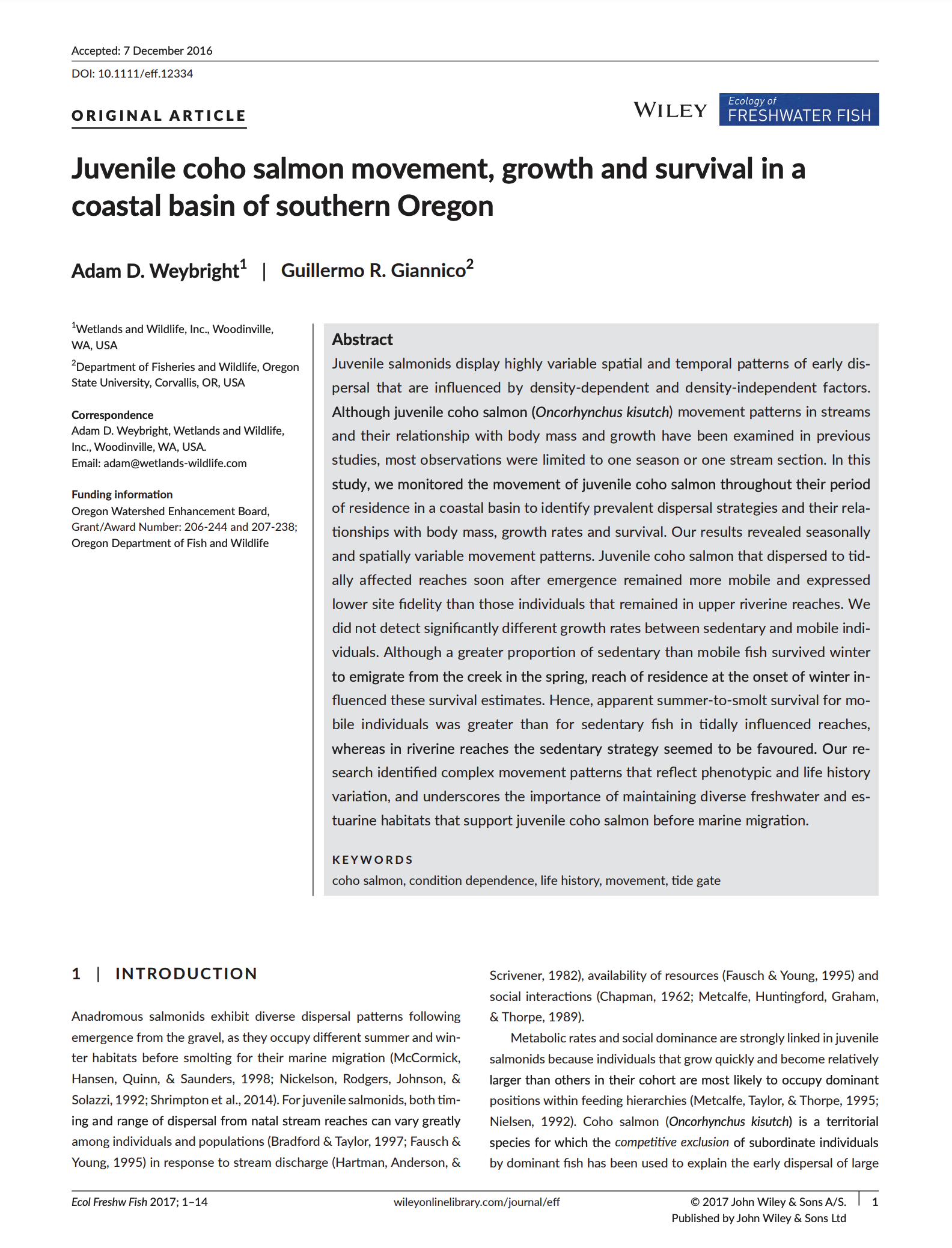
Juvenile salmonids display highly variable spatial and temporal patterns of early dispersal that are influenced by density-dependent and density-independent factors. Although juvenile coho salmon (Oncorhynchus kisutch) movement patterns in streams and their relationship with body mass and growth have been examined in previous studies, most observations were limited to one season or one stream section. In this study, we monitored the movement of juvenile coho salmon throughout their period of residence in a coastal basin to identify prevalent dispersal strategies and their relationships with body mass, growth rates and survival. Our results revealed seasonally and spatially variable movement patterns. Juvenile coho salmon that dispersed to tidally affected reaches soon after emergence remained more mobile and expressed lower site fidelity than those individuals that remained in upper riverine reaches. We did not detect significantly different growth rates between sedentary and mobile individuals. Although a greater proportion of sedentary than mobile fish survived winter to emigrate from the creek in the spring, reach of residence at the onset of winter influenced these survival estimates. Hence, apparent summer-to-smolt survival for mobile individuals was greater than for sedentary fish in tidally influenced reaches, whereas in riverine reaches the sedentary strategy seemed to be favoured. Our research identified complex movement patterns that reflect phenotypic and life history variation, and underscores the importance of maintaining diverse freshwater and estuarine habitats that support juvenile coho salmon before marine migration.
